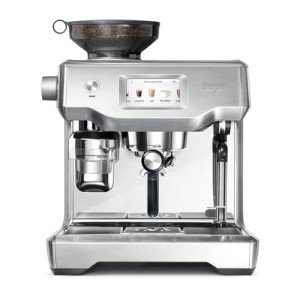10 Things We All We Hate About Home Use Espresso Machines
Home Use Espresso Machines: A Comprehensive Guide
Espresso machines have actually ended up being a staple in lots of homes as coffee lovers look for to duplicate café-quality brews in the comfort of their kitchen areas. The rise in popularity has caused a varied market filled with different designs, features, and costs. This article aims to supply an informative overview of home use espresso machines, assisting readers browse their choices effectively.
Understanding Espresso Machines
Espresso machines work by forcing hot water through finely-ground coffee under high pressure, leading to a focused coffee beverage referred to as espresso. There are numerous types of espresso machines classified based on their brewing methods and level of automation. The most common types consist of:
Manual Espresso Machines: These require the user to control the pressure and water circulation, enabling a more hands-on coffee-making experience.
Semi-Automatic Espresso Machines: These offer automatic control over water pressure, while the user by hand grinds and tamps the coffee.
Automatic Espresso Machines: With the push of a button, these machines immediately control the flow of water, making it easier to brew espresso with constant outcomes.
Super-Automatic Espresso Machines: These all-in-one machines deal with grinding, tampering, developing, and even milk frothing, making them ideal for users trying to find convenience.
Capsule or Pod Machines: These use pre-packaged coffee pods to produce espresso with minimal effort, however they restrict option in developing techniques and tastes.
Table: Comparison of Espresso Machine Types
Type
Control Level
Ease of Use
Cleaning Level
Ideal For
Manual
User-controlled
Moderate
High
Coffee perfectionists
Semi-Automatic
Partial automation
Moderate
Moderate
Home baristas
Automatic
Completely automated
Easy
Low
Busy people
Super-Automatic
Totally automated
Really easy
Extremely low
Convenience hunters
Capsule/Pod
Totally automated
Very easy
Really low
Casual drinkers
Key Features to Consider
When selecting a home use espresso machine, it's important to think about different functions that can substantially impact the quality of espresso and user experience.
Pressure: Look for machines that supply a minimum of 9 bars of pressure, as this is considered ideal for brewing espresso.
Boiler Systems: Single vs. dual boiler systems determine temperature stability and the capability to brew espresso and steam milk at the same time.
Grinder: Integrated grinders enable freshly ground coffee, which boosts taste. Consider machines with adjustable grind settings.
Milk Frother: For those who take pleasure in cappuccinos and lattes, a built-in steam wand or automatic frother is essential.
Size and Design: Consider your kitchen area area and visual preferences. Machines come in various sizes, from compact to big setups.
Rate: Home espresso machines can range from a few hundred to numerous thousand dollars, so it's essential to develop a budget before checking out choices.
Pros and Cons of Home Use Espresso Machines
Pros
Cons
Benefit of developing coffee at home
Preliminary investment can be high
Quality of espresso is often remarkable
Requires some skill, especially with manual machines
Capability to experiment with flavors
Upkeep and cleansing can be labor-intensive
Can save money in the long run
Not all machines will fit every coffee preference
Maintenance and Cleaning Tips
Maintaining an espresso machine is essential for lengthening its life and guaranteeing constant brew quality. Here are some beneficial suggestions:
Regular Descaling: Minerals from water can develop in the machine. Descale every 1-3 months, depending on water solidity.
Daily Cleaning: Rinse portafilters, baskets, and steam wands after each use to avoid coffee oils from building residue.
Use Filtered Water: This can help in reducing mineral buildup and improve the taste of coffee.
Change Gaskets and Seals: These parts might wear in time and ought to be changed to keep pressure and efficiency.
Check out the Manual: Each machine has specific care guidelines; following these will ensure durability.
FAQs About Home Use Espresso Machines
**Q1: What is the best budget espresso machine?The best budget espresso machine often depends on private needs, however models like the DeLonghi EC155 or the Breville Bambino are popular among users for offering great worth. Q2: How long do home espresso machines generally last?With correct upkeep, home espresso machines can last anywhere from 5 to 15 years, depending on the quality of the machine and frequency of use. Q3: Can I make cappuccinos and lattes with any espresso machine?While most espresso machines can make cappuccinos and lattes, having a dependable
steam wand or frother is essential for accomplishing the ideal milk texture.
Q4: Are super-automatic machines worth the investment?For those who prioritize convenience and fast brewing, super-automatic machines can be worth the investment, though they might lack some customizability in brew strength and flavor. Q5: What kinds of coffee beans are best for espresso?While White Espresso Machines contributes, beans identified as” espresso “blends are generally roasted darker, creating abundant tastes and a creamy texture when brewed.
Investing in a home espresso machine can transform the everyday coffee regimen into something special, elevating home brews to café quality. By comprehending the various kinds of machines, crucial functions to think about, maintenance needs, and weighing the
pros and cons, consumers can make educated choices that suit their individual preferences. As the espresso culture continues to grow, no matter the choice, every brew can be a scrumptious experience waiting to be savored.  **
**